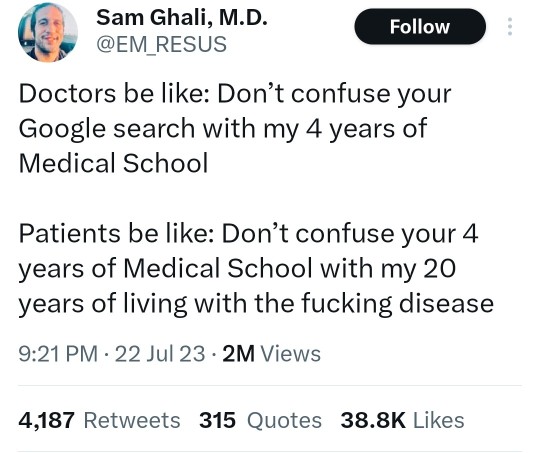#Health Care
Text
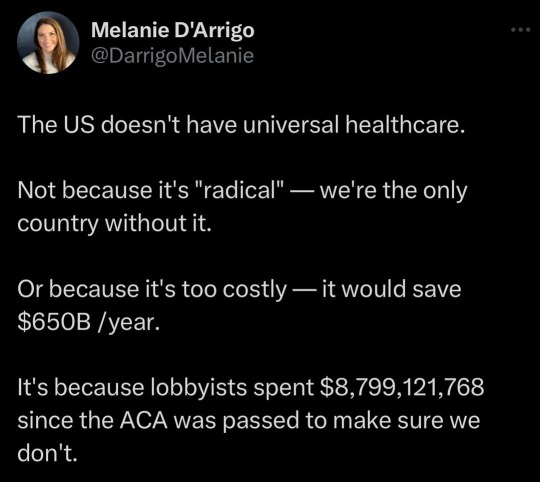
We need to end lobbyism as we know it. Corporate bribery is the worst way to provide a human right like health care.
Sad that $800 million/year in bribes costs us $650 billion/year in savings.
22K notes
·
View notes
Text
know someone who enjoys horror stories? share this one! it's true!
hahahahahahahahahaha aarrggghhhhhhhhhh
3,000,000 deaths due to COVID-19 last year. Globally. Three million.
Case rates higher than 90% of the rest of the pandemic.
The reason people are still worried about COVID is because it has a way of quietly fucking up your body. And the risk is cumulative.
I'm going to say that again: the risk is cumulative.
It's not just that a lot of people get bad long-term effects from it. One in seven or so? Enough that it's kind of the Russian Roulette of diseases.
It's also that the more times you get it, the higher that risk becomes. Like if each time you survived Russian Roulette, the empty chamber was removed from the gun entirely.
The worst part is that, psychologically, we have the absolute opposite reaction. If we survive something with no ill effects, we assume it's pretty safe.
It is really, really hard to override that sense of, "Ok, well, I got it and now I probably have a lot of immunity and also it wasn't that bad."
It is not a respiratory disease. Airborne, yes. Respiratory disease, no: not a cold, not a flu, not RSV.
Like measles (or maybe chickenpox?), it starts with respiratory symptoms. And then it moves to other parts of your body.
It seems to target the lungs, the digestive system, the heart, and the brain the most.
It also hits the immune system really hard - a lot of people are suddenly more susceptible to completely unrelated viruses.
People get brain fog, migraines, forget things they used to know.
(I really, really hate that it can cross the blood-brain barrier. NOTHING SHOULD EVER CROSS THE BLOOD-BRAIN BARRIER IT IS THERE FOR A REASON.)
Anecdotal examples of this shit are horrifying. I've seen people talk about coworkers who've had COVID five or more times, and now their work... just often doesn't make sense?
They send emails that say things like, "Sorry, I didn't mean Los Angeles, I meant Los Angeles."
Or they insist they've never heard of some project that they were actually in charge of a year or two before.
Or their work is just kind of falling apart, and they don't seem to be aware of it.
People talk about how they don't want to get the person in trouble, so their team just works around it.
Or they describe neighbors and relatives who had COVID repeatedly, were nearly hospitalized, talked about how incredibly sick they felt at the time... and now swear they've only had it once and it wasn't bad, they barely even noticed it.
(As someone who lived with severe dissociation for most of my life, this is a genuinely terrifying idea to me. I've already spent my whole life being like, "but what if I told them that already? but what if I did do that? what if that did happen to me and I just don't remember?")
One of its known effects in the brain is to increase impulsivity and risk-taking, which is real fucking convenient honestly. What a fantastic fucking mutation. So happy for it on that one. Yes, please make it seem less important to wear a mask and get vaccinated. I'm not screaming internally at all now.

I saw a tweet from someone last year whose family hadn't had COVID yet, who were still masking in public, including school.
She said that her son was no kind of an athlete. Solidly bottom middle of the pack in gym.
And suddenly, this year, he was absolutely blowing past all the other kids who had to run the mile.
He wasn't running any faster. His times weren't fantastic or anything. It's just that the rest of the kids were worse than him now. For some reason.
I think about that a lot.
(Like my incredibly active six-year-old getting a cold, and suddenly developing post-viral asthma that looked like pneumonia.
He went back to school the day before yesterday, after being home for a month and using preventative inhalers for almost week.
He told me that it was GREAT - except that he couldn't run as much at recess, because he immediately got really tired.
Like how I went outside with him to do some yard work and felt like my body couldn't figure out how to increase breathing and heart rate.
I wasn't physically out of breath, but I felt like I was out of breath. That COVID feeling people describe, of "I'm not getting enough air." Except that I didn't have that problem when I had COVID.)
Some people don't observe any long (or medium) term side effects after they have it.
But researchers have found viral reservoirs of COVID-19 in everyone they've studied who had it.
It just seems to hang out, dormant, for... well, longer than we've had an opportunity to observe it, so far.
(I definitely watched that literal horror movie. I think that's an entire genre. The alien dormant under ice in the Arctic.)
(oh hey I don't like that either!!!!!!!!!)
All of which is to explain why we should still care about avoiding it, and how it manages to still cause excess deaths.
Measuring excess deaths has been a standard tool in public health for a long time.
We know how many people usually die from all different causes, every year. So we can tell if, for example, deaths from heart disease have gone way up in the past three years, and look for reasons.
Those are excess deaths: deaths that, four years ago, would not have happened.
During the pandemic, excess death rates have been a really important tool. For all sorts of reasons. Like, sometimes people die from COVID without ever getting tested, and the official cause is listed as something else because nobody knows they had COVID.
But also, people are dying from cardiovascular illness much younger now.
People are having strokes and heart attacks younger, and more often, than they did before the pandemic started.
COVID causes a lot of problems. And some of those problems kill people. And some of them make it easier for other things to kill us. Lung damage from COVID leading to lungs collapsing, or to pneumonia, or to a pulmonary embolism, for example.
The Economist built a machine-learning model with a 95% confidence interval that gauges excess death statistics around the world, to tell them what the true toll of the ongoing COVID pandemic has been so far.
Total excess deaths globally in 2023: Three million.
3,000,000.
Official COVID-19 deaths globally so far: Seven million. 7,000,000.
Total excess deaths during COVID so far: Thirty-five point two million. 35,200,000.
Five times as many.
That's bad.
I don't like that at all.
I'm glad last year was less than a tenth of that. I'm not particularly confident about that continuing, though, because last year we started a period of really high COVID transmission. Case rates higher than 90% of the rest of the pandemic.
Here's their data, and charts you can play with, and links to detailed information on how they did all of this:
Here's a non-paywalled link to it:
https://archive.vn/2024.01.26-012536/https://www.economist.com/graphic-detail/coronavirus-excess-deaths-estimates
Oh: here's a link to where you can buy comfy, effective N95 masks in all sizes:
Those ones are about a buck each after shipping - about $30 for a box of 30. They also have sample packs for a dollar, so you can try a couple of different sizes and styles.
You can wear an N95 mask for about 40 total hours before the effectiveness really drops, so that's like a dollar for a week of wear.
They're also family-owned and have cat-shaped masks and I really love them.
These ones are cuter and in a much wider range of colors, prints, and styles, but they're also more expensive; they range from $1.80 to $3 for a mask. ($18-$30 for a box of ten.)
#covid isn't over#covid 19#disability rights#disability advocacy#wear a mask#covid conscious#covid cautious#mask up#wall of words#public health#health care
7K notes
·
View notes
Text
My sister rang me today.
Ever since she was six, she's had pain in her legs, which turns into pain in her hips and back for stretches of time. She's tried for years to get a diagnosis, with absolutely no joy. As a kid they thought she had collapsed arches in her feet; then it became clear her feet were fine, but something was wrong with her tendons; and then in her 20s they just shrugged it off with a "We'll never know probably" and that was that. She keeps on top of it with daily yoga, generally, though flare ups happen periodically. If she has to pause the yoga for some reason, she fairly rapidly regresses. Currently she has plantar fascitis again, which has halted everything once more, so right now she's back into a pain slump.
Anyway, she called me today while going from Doctors to pharmacy to get the codeine they've prescribed her for it.
"I think one of my yoga moves to help the fascitis might have exacerbated the legs," she said. "Trouble is, there's never been a diagnosis. I just have to trial and error what might help."
... And I had one of those lightbulb moments, you know? My brain suddenly went "Wait hang on, this is very familiar isn't it?" and rang the bells of memory.
"Did they ever test you for fibromyalgia?" I said.
They had not. It's never been suggested, even. My sister said she'd look up the symptoms and see if it chimed, and rang off.
Fifteen minutes later, she calls back.
Turns out she got to the pharmacy and gave them the prescription. While waiting, she googled fibromyalgia symptoms and found the NHS website.
"It was like someone had written a profile of me," she tells me on the phone. "Like, spookily, scarily accurate to me, right down to the temperature regulation bit. It felt like a practical joke."
And of course, as she stood there in the pharmacy, suddenly staring at the age of forty at the apparent answer she's been trying to get since she was six years old, she burst into tears.
"Oh no!" Said the pharmacist, hurdling the counter in a single leap and scattering the queue (I am exaggerating for humorous affectation.) "Quickly! Come into our little exam room, we'll get you tissues and water!"
My sister was duly ensconced into a Safe Place, and encouraged to cry it out. It took several hiccuping minutes, but finally, she managed to calm down and get back to an Extremely Watery Smile.
"Do you want to talk about it?" the pharmacist asked sympathetically.
"It's just..." my sister said, overwhelmed and searching for words. "My whole life I've been in pain, and they've never found why..."
"Ah," said the pharmacist thoughtfully. "Have you explored fibromyalgia?"
...
"TWICE IN ONE DAY," my sister yells on the phone to me later. "HOW THE HELL HAVE TWO SEPARATE PEOPLE ON THE SAME DAY FINALLY GIVEN ME THE ANSWER, AND NEITHER OF YOU IS A DOCTOR"
Anyway she has a doctor's appointment for tomorrow to discuss it, so we'll see
9K notes
·
View notes
Text
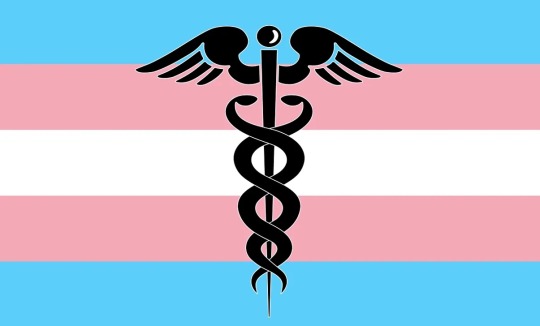

Source
No surprise, though glad to see data behind this
#health#health care#trans health care#news#current events#science#trans rights#important#lgbt#Lgbtq#the left
10K notes
·
View notes
Text
Less than three months after U.S. Senator Tammy Baldwin and her colleagues launched an investigation into the four major American manufacturers of inhalers, three of the companies have relented, making commitments to cap costs for their inhalers at $35 for patients who now pay much more.
25 million Americans have asthma and 16 million Americans have chronic obstructive pulmonary disease (COPD), meaning over 40 million Americans rely on inhalers to breathe.
Inhalers have been available since the 1950s, and most of the drugs they use have been on the market for more than 25 years.
According to a statement from the Wisconsin Senator’s office, inhaler manufacturers sell the exact same products at a much lower costs in other countries. One of AstraZeneca’s inhalers, Breztri Aerosphere, costs $645 in the U.S.—but just $49 in the UK. Inhalers made by Boehringer Ingelheim, GlaxoSmithKline, and Teva have similar disparities.
Baldwin and her Democratic colleagues—New Mexico Sen. Ben Ray Luján, Massachusetts Sen. Ed Markey, and Vermont Sen. Bernie Sanders—pressured the companies to lower their prices by writing letters to GSK, Boehringer Ingelheim, Teva, and AstraZeneca requesting a variety of documents that show why such higher prices are charged in America compared to Europe.
As a ranking member of the Senate Committee on Health, Education, Labor, and Pensions, Baldwin recently announced that as a result of the letters they had secured commitments from three of the four to lower the out-of-pocket costs of inhalers to a fixed $35.00 rate.
“For the millions of Americans who rely on inhalers to breathe, this news is a major step in the right direction as we work to lower costs and hold big drug companies accountable,” said Senator Baldwin.
A full list of the inhalers and associated drugs can be viewed here.
It’s the second time in the last year that pharmaceutical companies were forced to provide reasonable prices—after the cost of insulin was similarly capped successfully at $35 per month thanks to Congressional actions led by the White House.
-via Good News Network, March 25, 2024
#united states#us politics#us senate#tammy baldwin#bernie sanders#big pharma#health care#us healthcare#inhaler#asthma#pulmonary disease#healthcare access#affordability#disability#good news#hope
4K notes
·
View notes
Text
Vice President Kamala Harris announced this week that the Biden administration is looking to lessen the burden medical debt has on people by purging it from their credit report. This means that even if people have piles of medical debt — one in five Americans say they do — it’s not going to affect their ability to get a mortgage or a car loan. So they will at least have a place to rest their head and a car they can drive to work every day while paying off their medical bills.
Via AP:
Harris said that would make it easier for them to obtain an auto loan or a home mortgage. Roughly one in five people report having medical debt. The vice president said the Consumer Financial Protection Bureau is beginning the rulemaking process to make the change.
The agency said in a statement that including medical debt in credit scores is problematic because “mistakes and inaccuracies in medical billing are common.”
“Access to health care should be a right and not a privilege,” Harris told reporters in call to preview the action. “These measures will improve the credit scores of millions of Americans so that they will better be able to invest in their future.”
It only seems fair that high medical bills for an emergency or serious illness shouldn’t affect one’s credit rating anyway. It’s not like we’re talking about someone irresponsibly dropping several grand at Versace and then never paying off the credit card bill. Fifty-seven percent of Americans could not afford a surprise $1000 emergency, so the inability to pay off massive amounts of medical debt is hardly a fair reflection of an inclination to default on normal payments — payments you can budget for — on something like a mortgage or auto loan. “Way to be irresponsible by getting cancer, lady! You should definitely be punished for that by not being able to find any place to live!” seems pretty harsh, no?
6K notes
·
View notes
Text

3K notes
·
View notes
Text
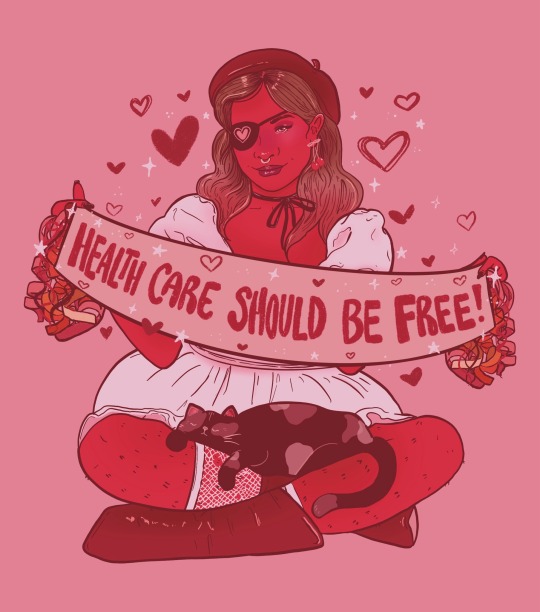
Health care is a human right.
Digital illustration of a woman sitting crossed legged on the floor with a spotted cat on her lap. She’s wearing a white dress, red beret, and red boots. Text reads, ‘health care should be free’
848 notes
·
View notes
Text
Do not ignore the suffering of Sudanese women | Women's Rights | Al Jazeera
Sudanese women are bearing the brunt of the vicious war that began in mid-April between the Sudanese Armed Forces (SAF) and the paramilitary Rapid Support Forces (RSF). More than six million people have been displaced since the new war erupted including an estimated 105,000 women who are currently pregnant, according to the United Nations. Of the 1.2 million who have fled to neighbouring countries, nearly nine in 10 are women and children. The healthcare system in Sudan is in a perilous state – 70 to 80 percent of hospitals in conflict areas are not operational – with devastating consequences for women in need of maternal health medicines.
5K notes
·
View notes
Text

Abortion is not birth control. It is health care.
2K notes
·
View notes
Text

1K notes
·
View notes
Text

Americans demand free health care for all
572 notes
·
View notes
Text
The Liberals and the NDP have reached a deal to table pharmacare framework legislation, quelling the back-and-forth from recent months that failure to reach an agreement on the issue could put the parties' confidence-and-supply agreement at risk.
NDP Leader Jagmeet Singh confirmed the development to CTV News on Friday, calling the draft legislation "historic."
"I can proudly say that not only do we have legislation that specifically refers to single-payer, that refers to the Canada Health Act, and the principles and values, we also have secured commitments to delivering diabetes medication and contraceptives using a single-payer public model," Singh told CTV's Question Period host Vassy Kapelos in an interview airing Sunday.
Continue Reading
Tagging @politicsofcanada
347 notes
·
View notes
Photo
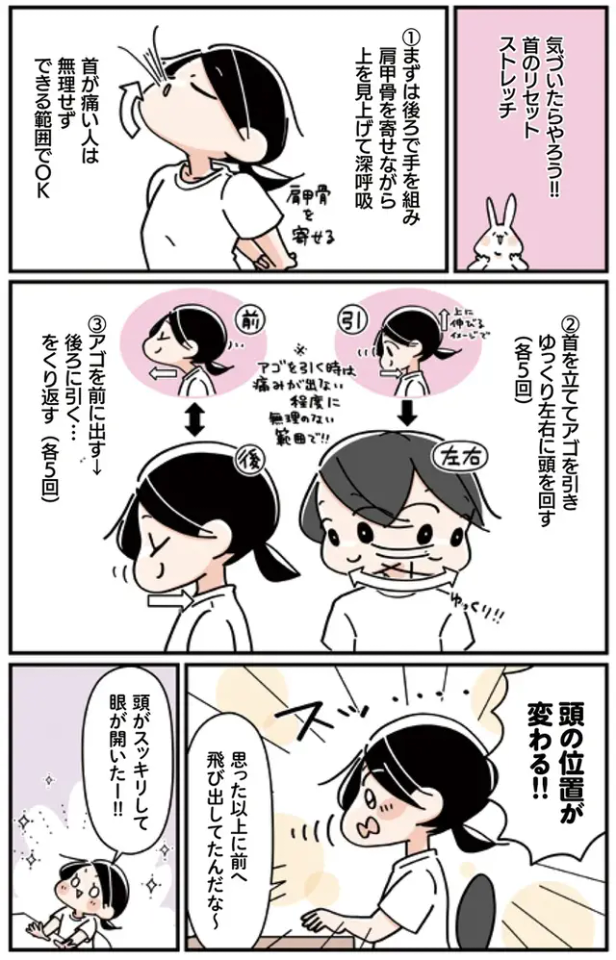
デスクワークの合間に。頭の位置を正す「首リセットストレッチ」/限界ズボラゆるトレ大全(4)
結構自分でケアするのが難しい首。湿布一日貼れないしお風呂も浸かりづらいし、太い血管もあるし。こまめに労ろう!
553 notes
·
View notes

